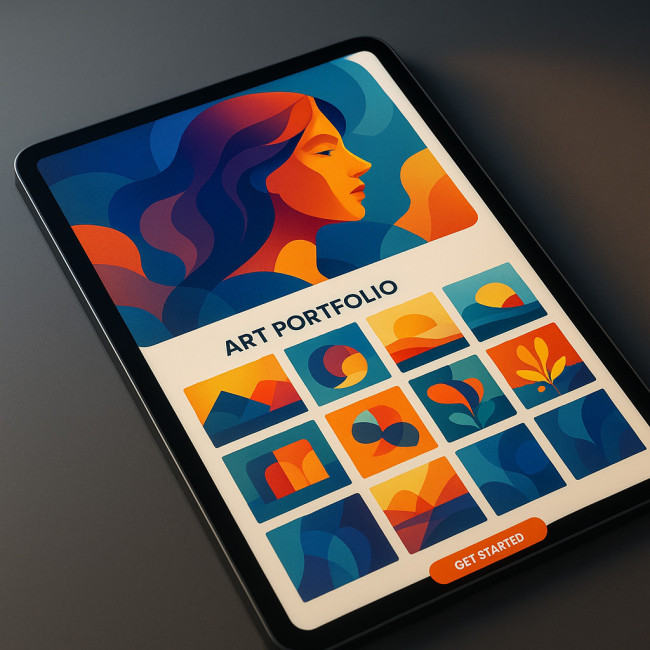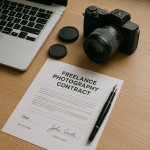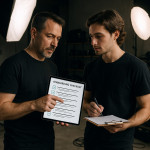Portfolio sequencing tricks that land interviews with art buyers and agencies
Perfect shots do not guarantee a callback—the order in which you present them does. This guide shows you how strategic portfolio sequencing instantly positions your work for art buyers and agencies, boosts engagement metrics and unlocks more interview slots.
Why portfolio sequencing is your silent salesperson

Art buyers scan dozens of galleries daily. According to Adobe's State of Creativity report, they decide in under 44 seconds whether to request an interview. Smart portfolio sequencing structures that sprint, guiding the eye from a magnetic opener to a convincing finale. When every project feels like a logical next step, interview rates climb and bounce rates fall.
The narrative arc model
- Hero opener – Lead with your most recognisable, award-winning or viral piece.
- Context chapter – Follow with two or three projects that show breadth without breaking style consistency.
- Credibility boosters – Insert case studies that spotlight measurable results or brand names.
- Fresh twist – Add an experimental piece to prove evolution.
- Conversion closer – End on a project similar to briefs you want tomorrow, then display a clear CTA.
Step-by-step portfolio sequencing workflow
1. Reverse-engineer buyer goals
Before dragging thumbnails around, list the top three project types your ideal art buyer commissions this year. Sequencing your portfolio around those goals triggers instant relevance. For example, if agencies need large-scale murals, move public-space work up front and file editorial pieces later.
2. Audit each project with the ACE score
| Criterion | Description | Score (1-5) |
|---|---|---|
| Alignment | Does it match current buyer demand? | |
| Credibility | Does it showcase results, awards or press? | |
| Emotion | Does it evoke a clear feeling within 5 seconds? |
Order projects by total ACE score. Pieces with tied results should be sequenced for story flow—place contrasting palettes next to maintain visual rhythm.
3. Blend depth and variety with the 1-3-1 rule
After the hero opener, group three thematically similar works, then surprise with one wildcard that proves versatility. This 1-3-1 rhythm keeps buyers curious without confusing them.
4. Optimise technical flow
- Keep file weights below 500 KB; pages that load in under two seconds secure 34 % longer viewing time.
- Use consistent aspect ratios to avoid jarring jumps.
- Add descriptive alt text featuring “portfolio sequencing” to help search crawlers understand context.
Need help shaving milliseconds? The tips in this image-speed guide walk you through compression settings without losing detail.
5. Layer social proof inside the sequence
Insert short captions that quote results (“48 % uplift in dwell time”) or micro client testimonials directly under the related slide. Learn how in our testimonial integration tutorial.
Common sequencing errors (and fast fixes)
- Chronological ordering – Buyers care about relevance, not timeline. Re-order by strategic impact.
- Style whiplash – Jumping from neon pop art to muted watercolours confuses decision makers. Batch by palette or target audience.
- Missing CTA – End with a booking button or link to a collaboration page. A strong example is the Artfolio collaboration board, which places contact routes directly after the final image.
For deeper storytelling tweaks, dive into visual storytelling upgrades.
Advanced sequencing techniques that impress agencies
Analytics-driven reorder
Use heat-map tools to spot the first slide where scrolling drops. Move your strongest conversion project to that slot. Portfolio platforms that lack native analytics can be paired with free services like Hotjar.
Seasonal sequencing
Agencies hunting holiday campaign art in Q3 react better to vibrant, festive palettes. Maintain duplicate galleries per season and switch the live version quarterly.
Interactive case-study blocks
Replace static captions with collapsible panels showing sketches, moodboards and ROI figures. If you are hesitating between long-form case studies and pure image galleries, compare both formats in this side-by-side breakdown.
Cross-discipline bridges
Sequence projects that highlight collaboration prowess—e.g., a mural that turned into a limited print edition—that prove you can upsell ideas across channels. For workflow inspiration, see these outreach etiquette tips.
Checklist: launch your new sequence in one afternoon
- Set concrete interview goals (e.g., five gallery meetings/month).
- Run ACE scoring on all projects.
- Apply 1-3-1 rhythm and validate story flow.
- Compress images and add SEO-friendly alt text.
- Embed micro-testimonials and measurable outcomes.
- Add CTA linking to contact or booking calendar.
- Test load speed on mobile.
- Publish and monitor heat-maps for two weeks.
FAQ
- How many projects should a sequenced portfolio include?
- Eight to twelve pieces deliver enough depth without exhausting buyers. Quality beats volume.
- Should personal experiments appear before client work?
- Only if the experiment showcases a style you want paid for. Otherwise, place it after proven commercial pieces.
- How often should I rearrange my sequence?
- Review metrics monthly; tweak order whenever buyer goals or engagement patterns shift.
Quick self-test: is your sequencing buyer-ready?
Next step: lock in those interviews

Apply the sequence, refresh analytics after two weeks, and update again. When buyers glide through a story that matches their needs, interviews follow. Don't forget to add a concise call link or booking calendar right after your final slide—your most inspired viewer is only one click away.











